After a dry, benign winter in England, the weather fought back in April. The country had the wettest April on record, and our gardens have suffered. With the arrival of May, we've had a respite as well as a chance to repair winter damage and replant where required. The result: Our garden centers now are bursting at the seams with the wonderful colors of flower and foliage to tempt us.
We are lucky to have such a range of plants available to us as a result of the mild Gulf Stream–influenced climate, the 19th-century plant hunters and the ongoing British passion for gardening.
So here are my notes from an English garden center, which highlight some plants that not only look their best in spring, but also pay their way for the rest of the year.
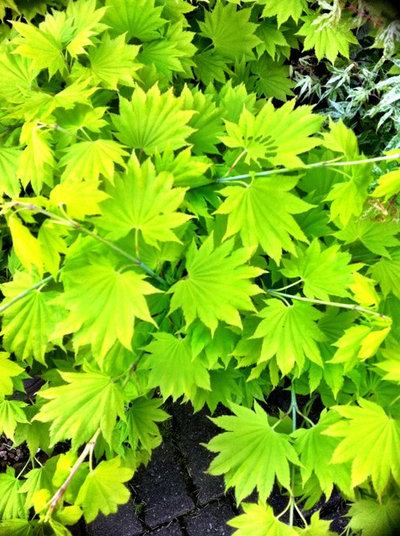
Recently, lime green has been the "in" color for house decor and design. Nature hasn't missed out on this fad, with
Golden Fullmoon Maple (Acer shirasawanum 'Aureum'), zones 5 to 7, leading the way.
This acer forms a superbushy, spreading tree reaching 15 to 20 feet on maturity and gives us rewarding colors at both ends of the year. The pale yellow and lime-green leaves in the spring darken in the summer and glow gold in the autumn.
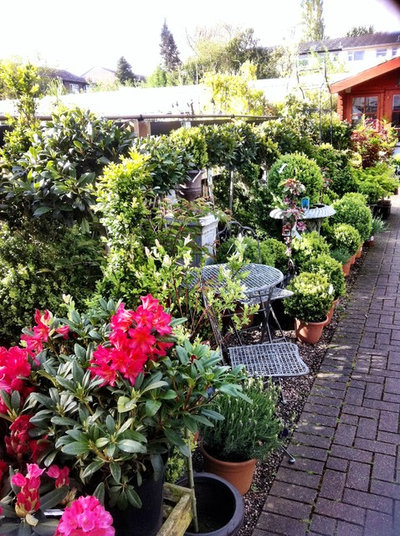
Pregrown topiary balls and other shapes are very popular in English garden centers.
Box (Buxus spp.) and
Sweet Bay (Laurus nobilis), U.S. climate zones 8 to 10, are favorites, though other species such as
Photinia 'Red Robin' (Photinia x fraseri 'Red Robin'), zones 7 to 9,
are also available.
Box topiary is usually trimmed in May for the first time when the new spring growth has sprouted. To keep their tight shapes, topiaries are then clipped again in midsummer.
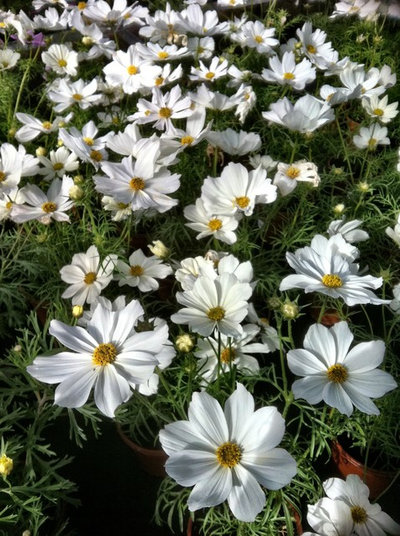
A great favorite among annuals planted for borders and containers, as well as for cuttings, is the old favorite Cosmea.
Cosmea Sonata Series (
Cosmos bipinnatus 'Sonata Series'), all zones,
are wonderful compact plants with feathery, dissected leaves and daisylike flowers with yellow centers. They can be grown from seed, but most gardeners buy young plants in early spring.
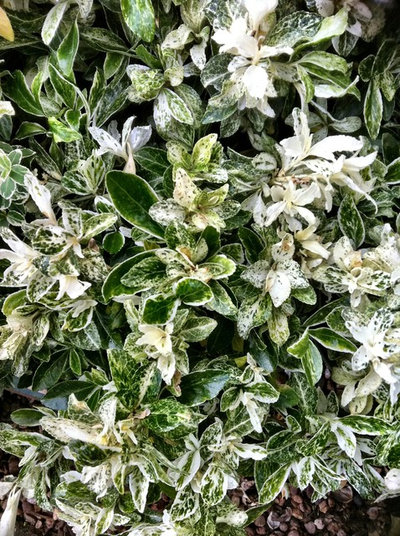
The low-growing, shrubby evergreen varieties of Euonymus, such as
Euonymus fortunei 'Emerald 'n Gold',
zones 5 to 9, and
Euonymus fortunei 'Emerald Gaiety', zones 4 to 9, have been great favorites for many years as ground cover plants.
New to the market and set to become a great favorite is
Euonymus japonicus 'Pierrolino', hardy to zone 6. Pierrolino is a compact, dense and bushy evergreen shrub that comes alive in spring with rounded white to mottled white leaves.
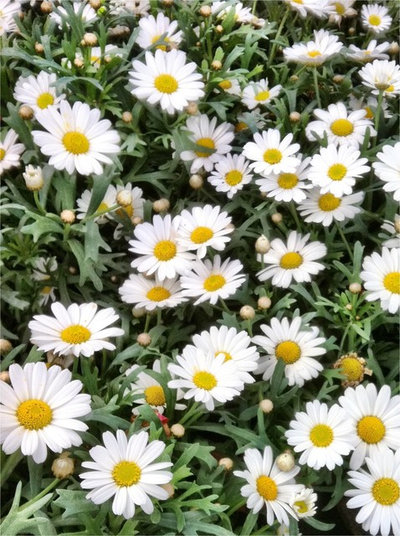
The
Marguerite daisy (Argyranthemum frutescens), zones 9 to 11,
has been a fashionable plant in British gardens since the '60s, especially when grown as a standard plant on stems 2 to 3 feet tall.
The charming white daisylike flowers (they also come in pinks, yellow and cream), are borne throughout the summer — though only with judicial deadheading. In mild climates they can be left outside. I gather that includes
zones 10 and 11 in the United States, but in Britain we overwinter them under protection.
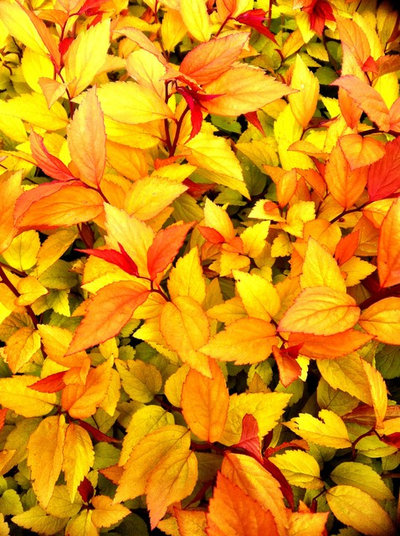 Spirea japonica 'Firelight'
Spirea japonica 'Firelight', zones 4 to 8, is truly a firework of a deciduous shrub. In spring it dazzles with a bright mixture of red, orange and yellow foliage, but its leaves turn green with red young tips for the rest of year. It provides a little bonus in late summer with dark pink and purple flowers, but its spring foliage is the real winner. Compared with a lot of spireas, it's reasonably low growing, reaching around 30 inches high with about the same spread.

Nemesias are becoming a real favorite of British gardens as summer container plants, and in milder areas, in rock gardens and borders.
Nemesia 'Myrtille' is perhaps the bluest of all the recent introductions. It holds its generous violet-blue flowers from late spring to the first frosts of autumn and is compact in growth, making an 8-inch mound.
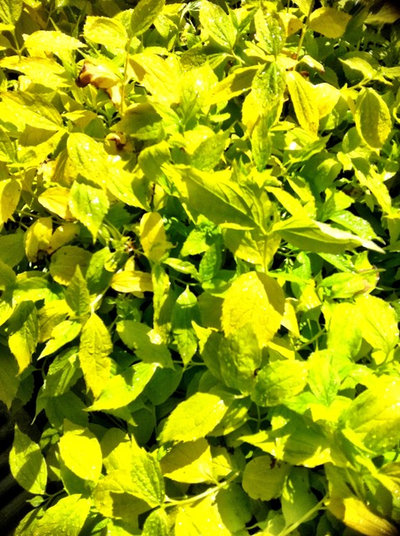
The acid yellow foliage of
Sweet Mock Orange (Philadelphus coronarius 'Aureus'), zones 5 to 9, makes a perfect companion for plants such as the Common Hop (
Humulus lupulus 'Aureus'). The leaves glow in the spring sun and then turn greener. This provides a perfect foil for the strongly scented, creamy white flowers.
Sweet Mock Orange's arching habit means it can reach a height of 8 feet over a five- to 10-year period, so it's not a plant for small gardens.
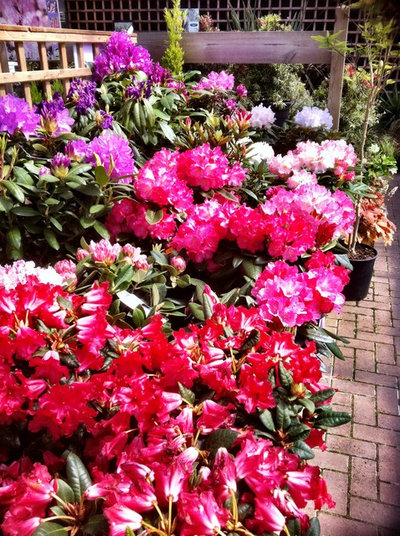
Azaleas and rhododendrons are still very popular plants in British gardens. They prefer acidic soils and grow especially well in the southwest with its mild climate.
Plant breeding continues to give us varieties more suited to modern gardens. They are generally compact in habit, with a longer flowering season.
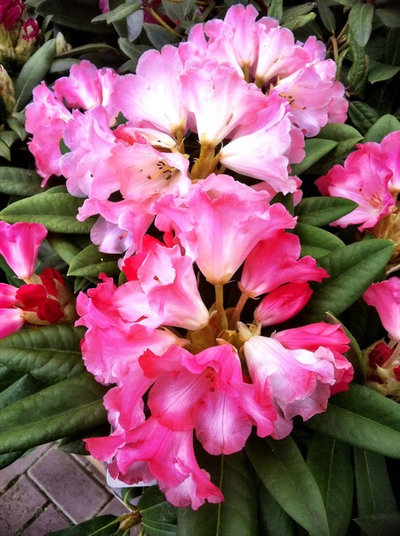
Discovered in the 1900s on Yakushima, a small, windswept, mountainous island off the south coast of Japan,
Rhododendron yakushimanum was introduced to the West 50 years ago.
Rhododendron 'Surrey Heath' is a hybrid of
R. yakushimanum and has all the best characteristics of the species. It is a dense, compact shrub with lovely deep green leaves. It has globe clusters of rose-pink flowers on yellow stems in spring. It requires lime-free soil or containers with an ericaceous compost.
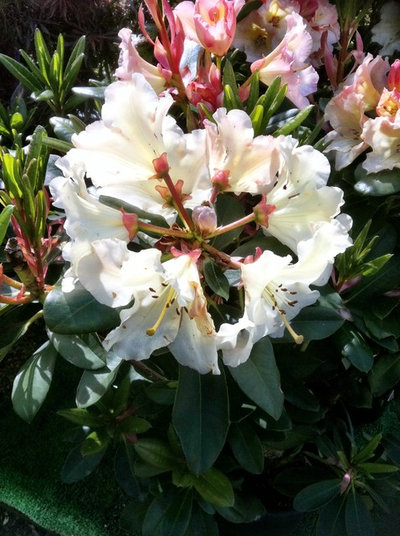
For a larger, spreading rhododendron,
R. 'Horizon Monarch' is a great late spring variety. It produces bright red to pink buds in mid-May to early June, which open to large clusters of funnel-shaped, pale yellow flowers with small red flares. This all occurs against a background of leathery, elliptical, dark green leaves.
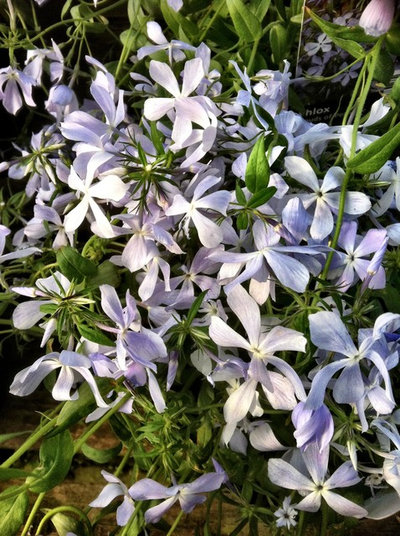 Phlox divaricata 'Clouds of Perfume'
Phlox divaricata 'Clouds of Perfume', zones 4 to 8, is a late spring-flowering phlox that bears masses of scented pale blue flowers above bright green carpeting foliage. It's hardy and evergreen and should survive for many seasons. Plant phlox in a sunny spot by your kitchen door to enjoy its superb perfume to the fullest.
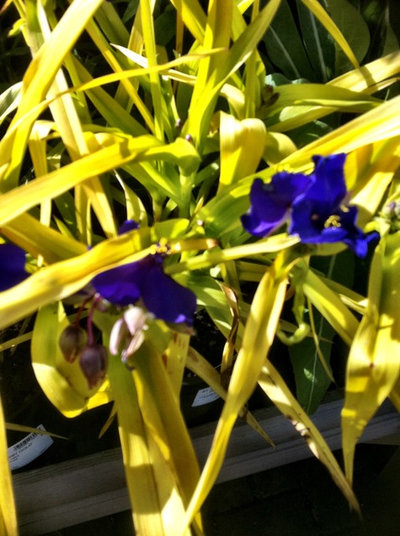
Rarely do we get such bright yellow foliage in perennials, but this
Spiderwort (Tradescantia 'Sweet Kate'), zones 5 to 9, is without a doubt the best. Happiest grown in a moist, fertile soil in full sun, it will flower throughout the summer, with stunning blue flowers contrasting with its golden foliage.
More:How to Get the Cottage Garden Look





